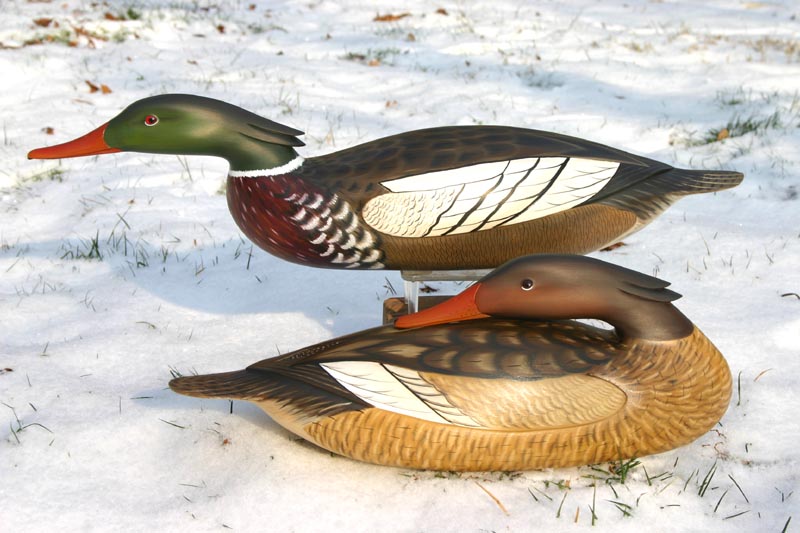First of all, like I said in an earlier post, I wish my first decoys had looked as nice as yours. Nice job.
as for painting the spots....I thought you did a good job of doing a gunning paint job on the spots..... as you progress as a carver and painter, you will want to add more detail and realism. Spots on BWT drakes and the chest of GWT drakes will be of different apperances and darknesses/tones due to the fact that some spots are clearly exposed on feather edges, others are partially exposed, and some are showing through one or more layers of feathers. So not all of the spots will be black/dark. There will be a heck of a lot more spots of varying shapes and tones than most of us really want to paint, especially on a BWT drake! So finding a trick to paint them quickly and consistently is a boon, especially on gunners............
Since BWT drakes were never seen in full plumage where I gunned, I solved the problem by only making one on a commission for Charley Moore, and then never making another. I did a number of GWT drakes, but the chest is so small an area, I could muddle through, even painting each spot with a brush.
the dowel trick works great for painting eye spots on poppers, and then using a smaller dowel or nail head to do the pupils. The key is getting the right consistency of the paint which is not too bad a task if using tube type paints, BUT, for painting spots on decoys you might want to try taking an old, beat up, ready to throw away round style of brush, like sable, and cutting it off 1/4 to 1/2 inch from the metal part of the brush that holds the bristles. Held vertically, with the right consistency of paint, this is another way to daub and paint some spots fairly quickly and consistently. It takes practice and experimentation with the size of round brush used and the distance you want the bristles cut from the metal tube. Another method I have seen used, but never personally done, is to cut foam from a foam paint brush into a short round cylinder and use that like a dowel to daub the paint.
Mike







